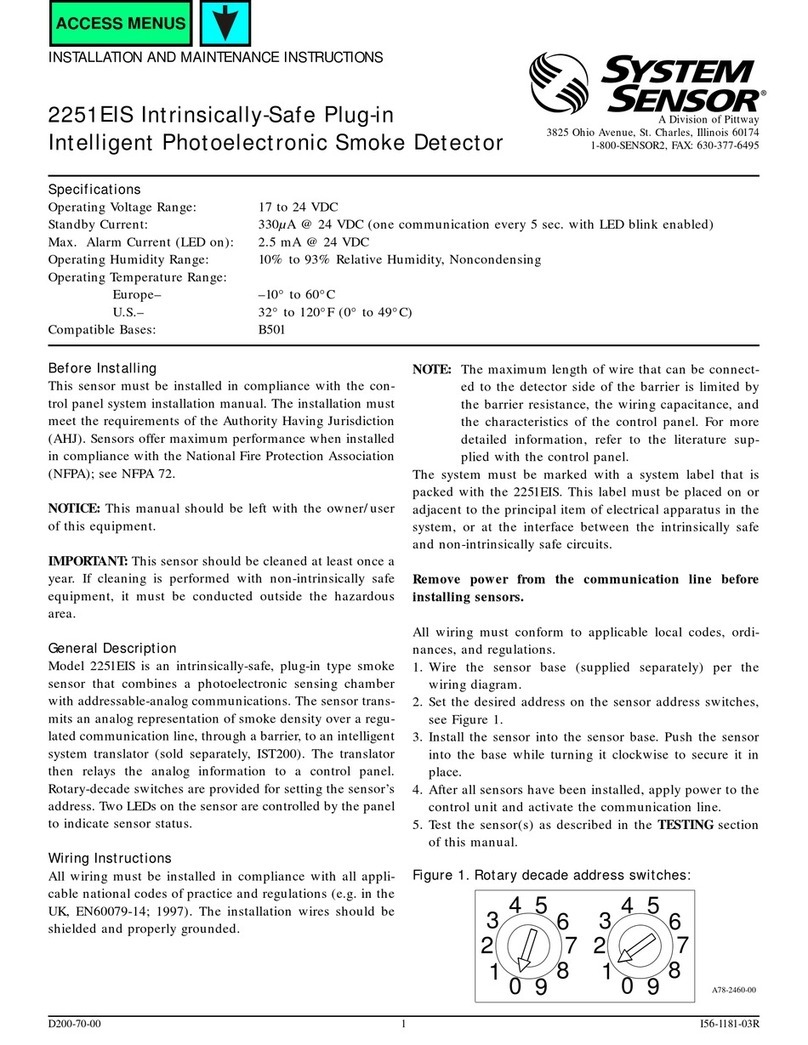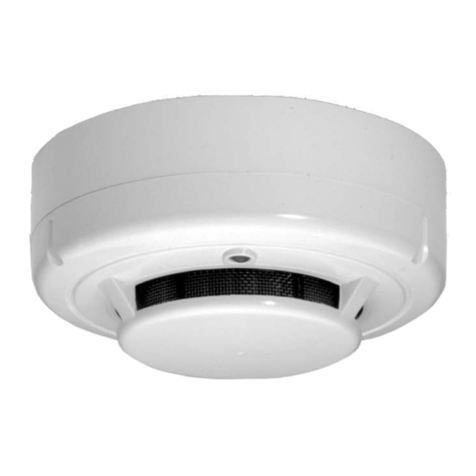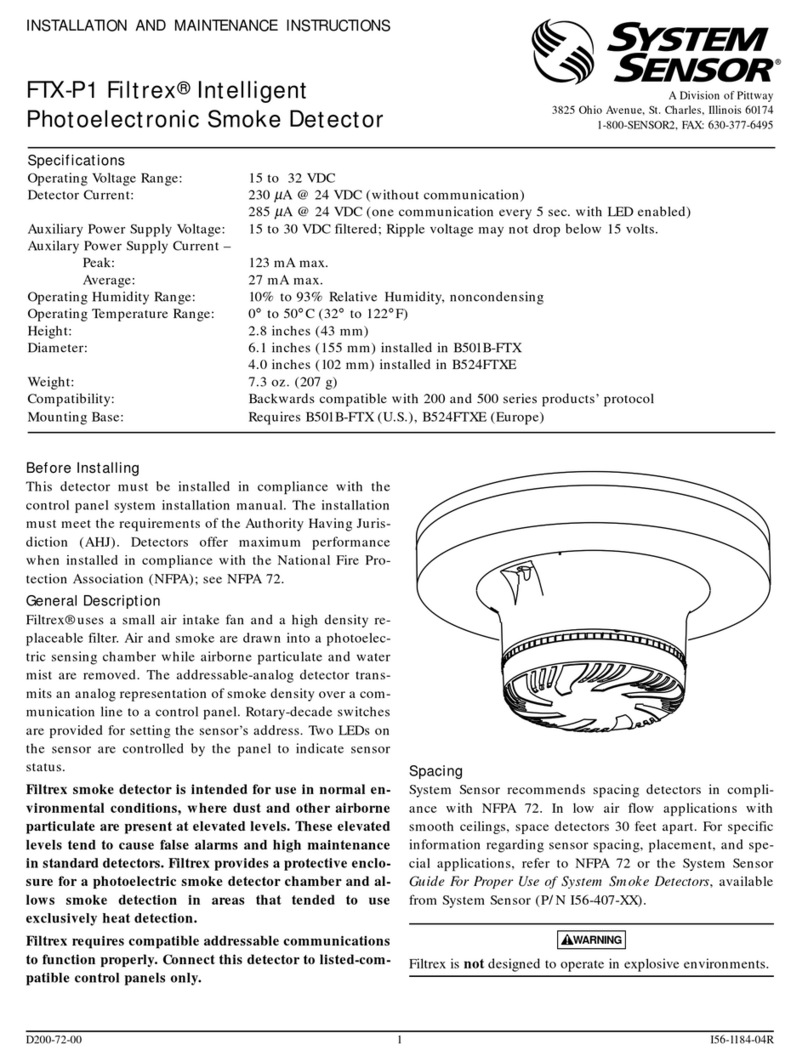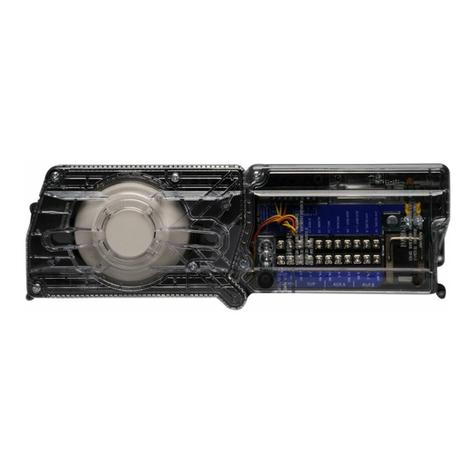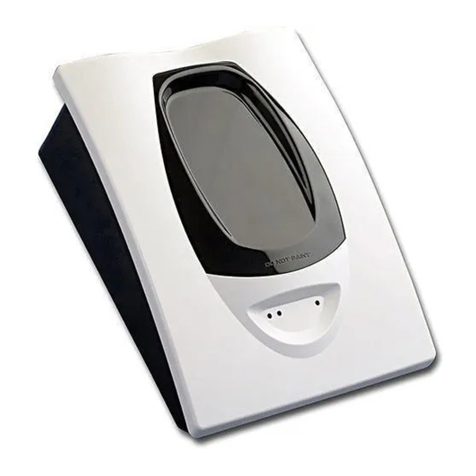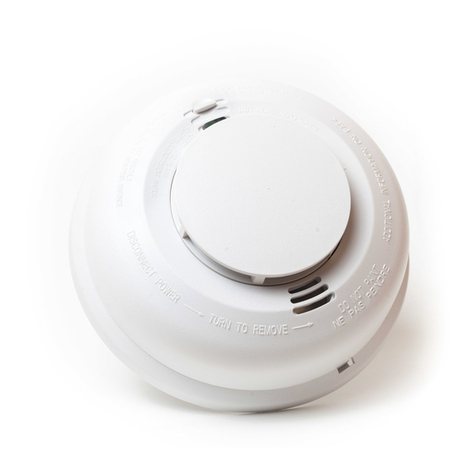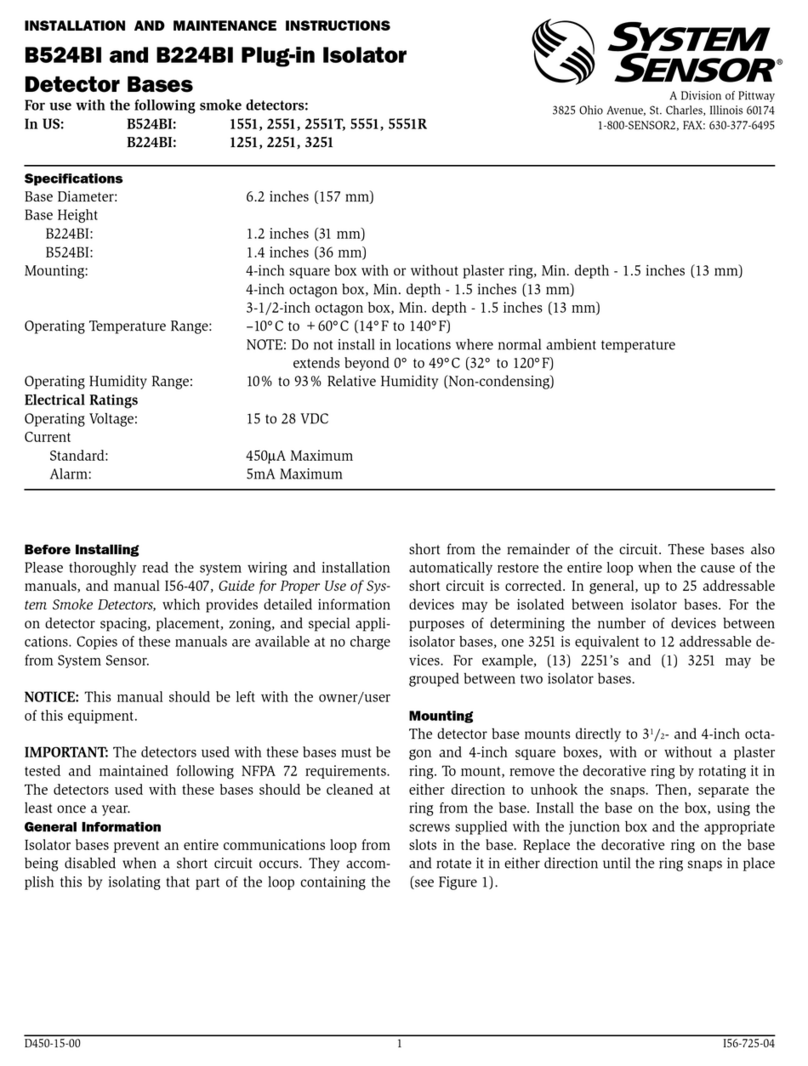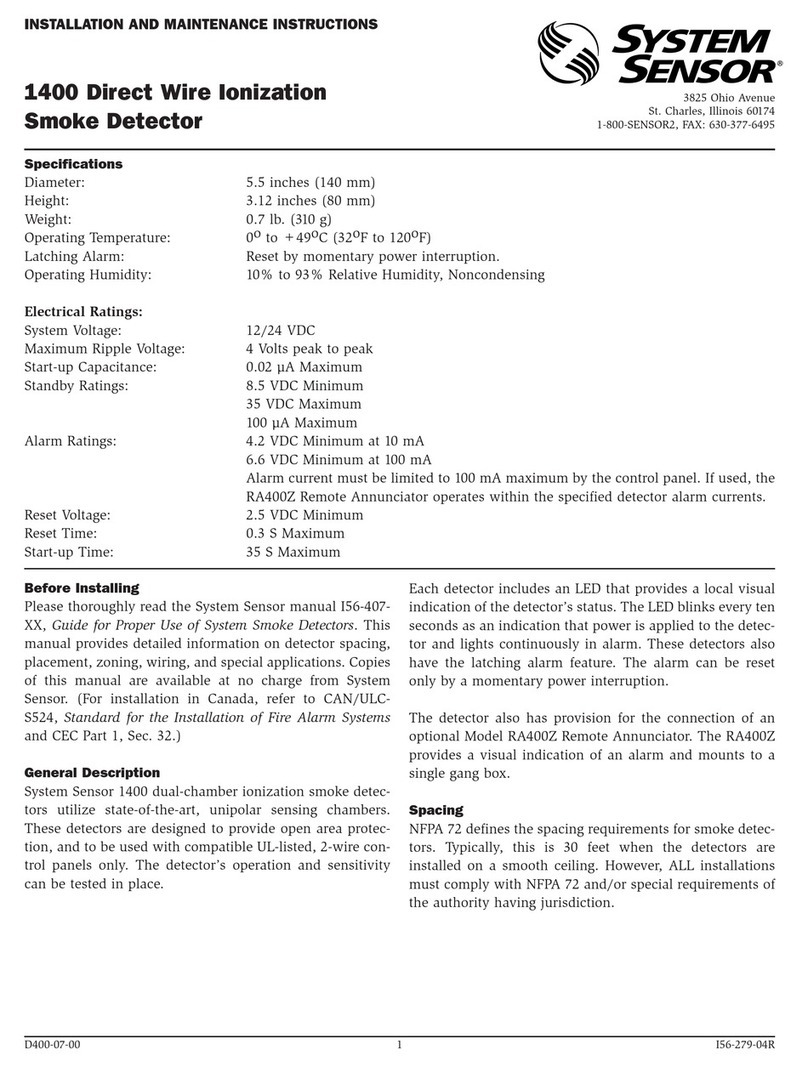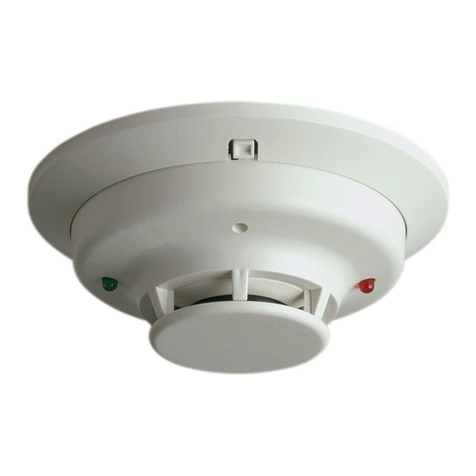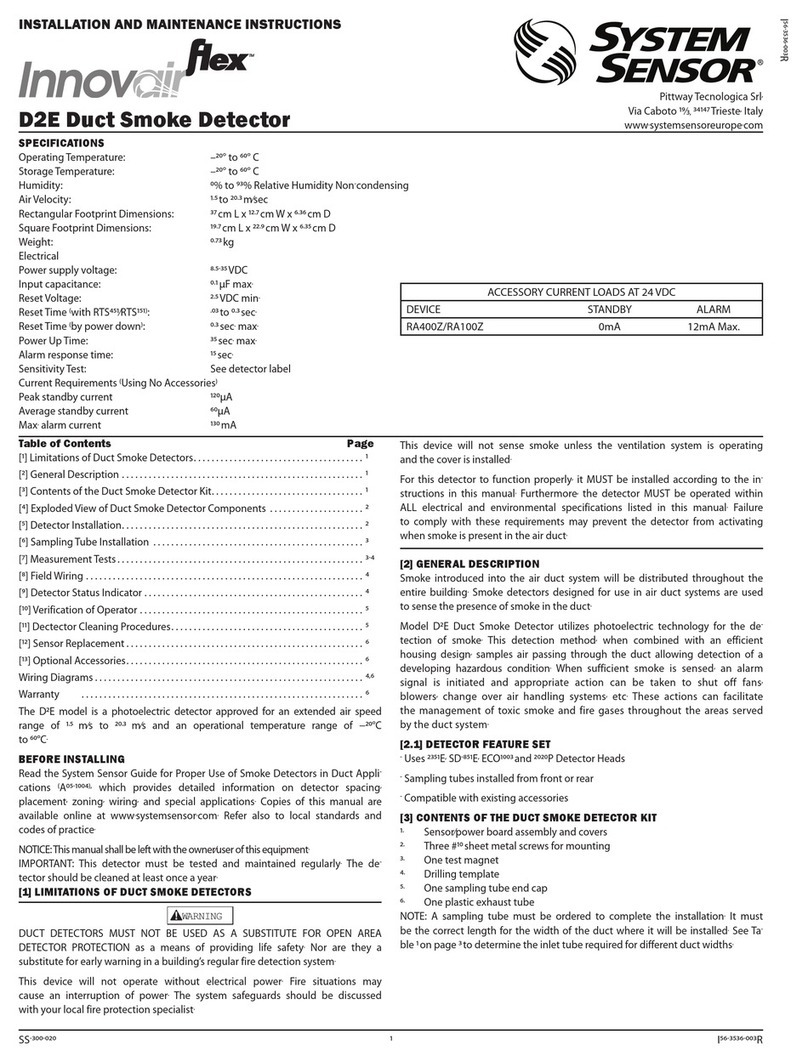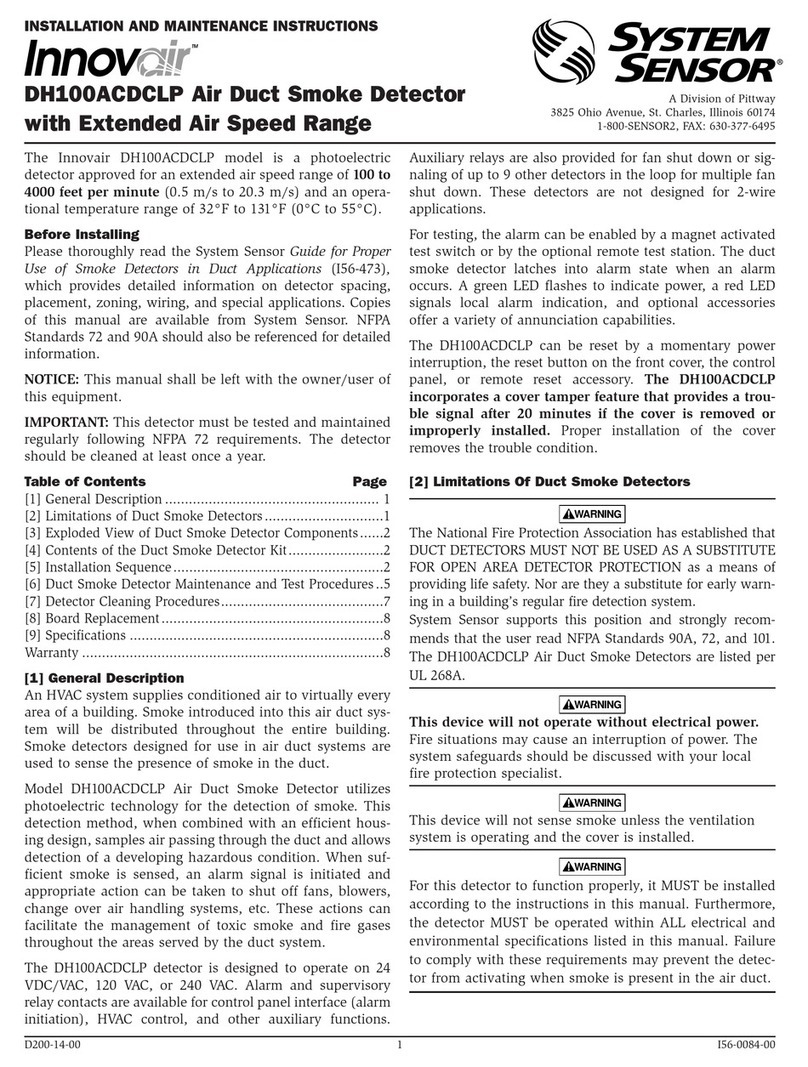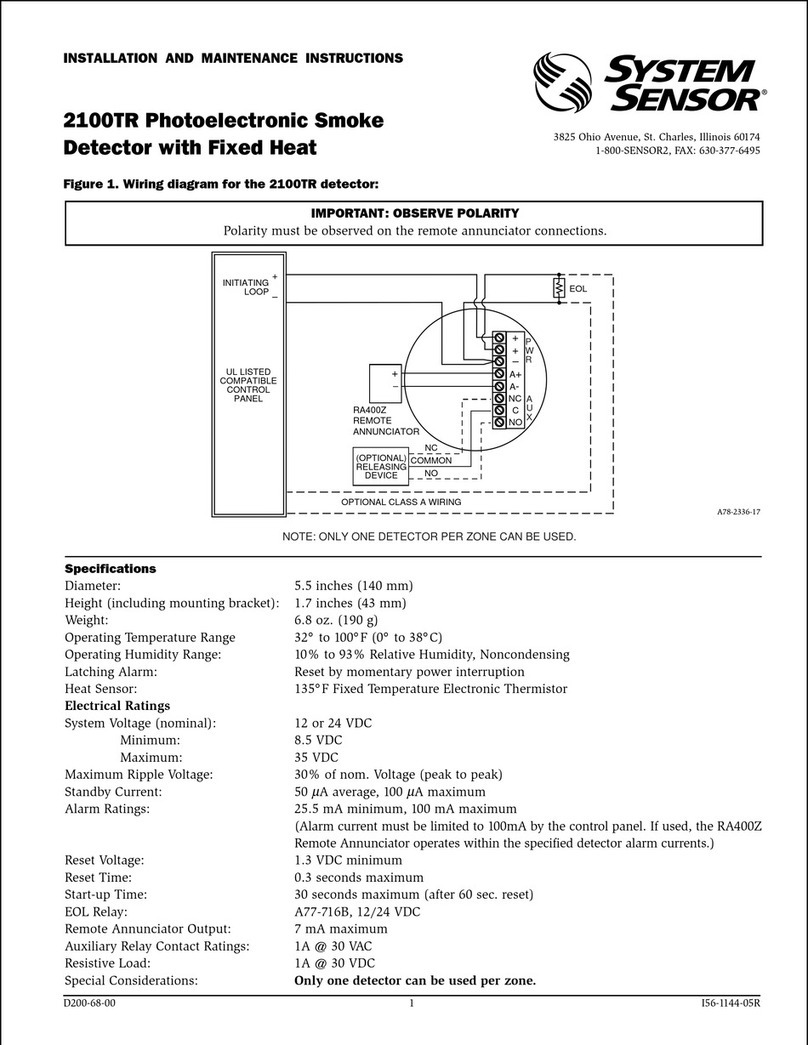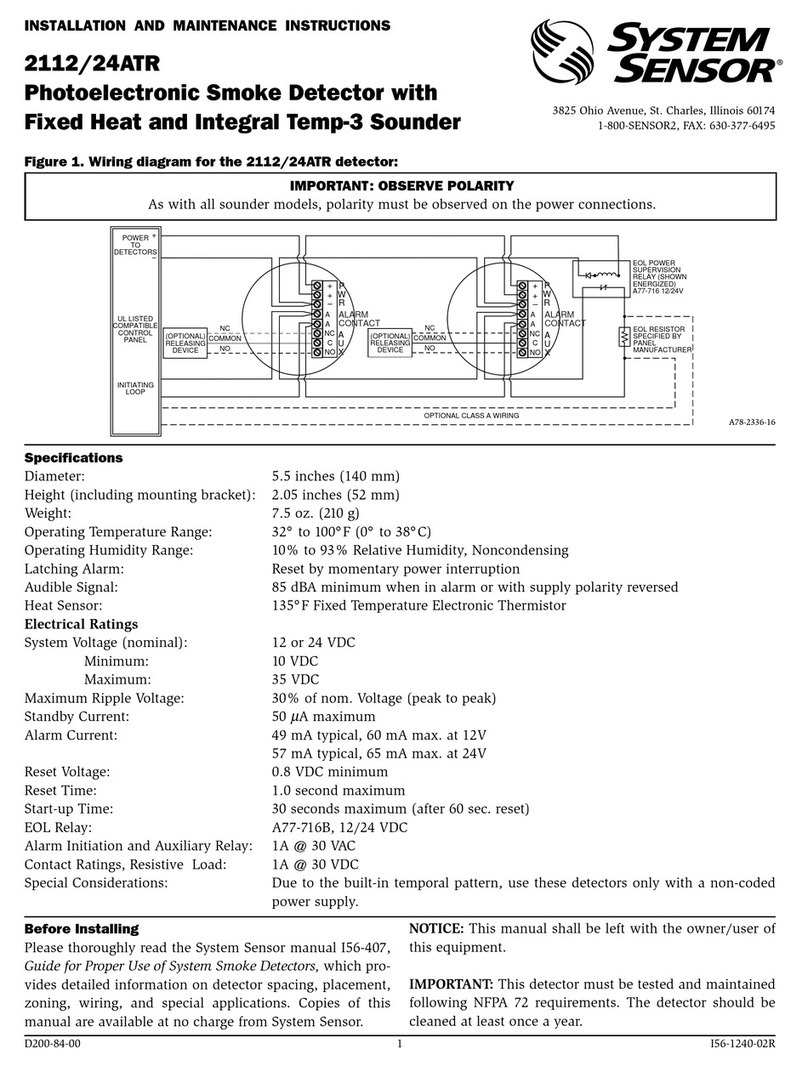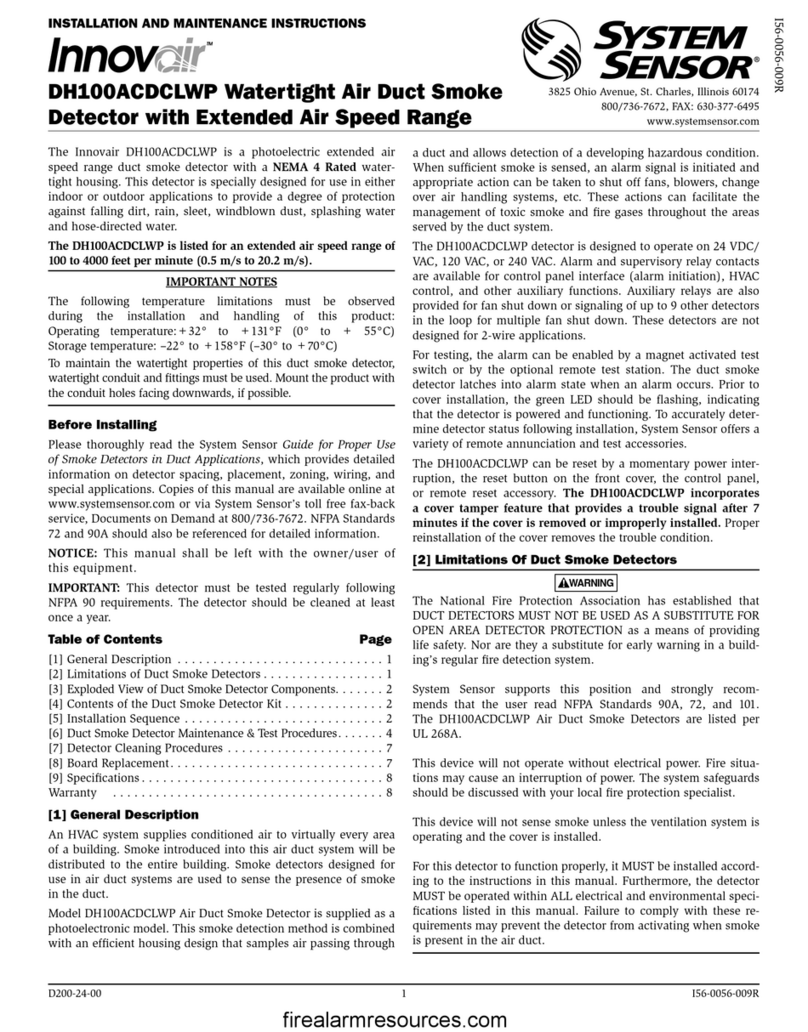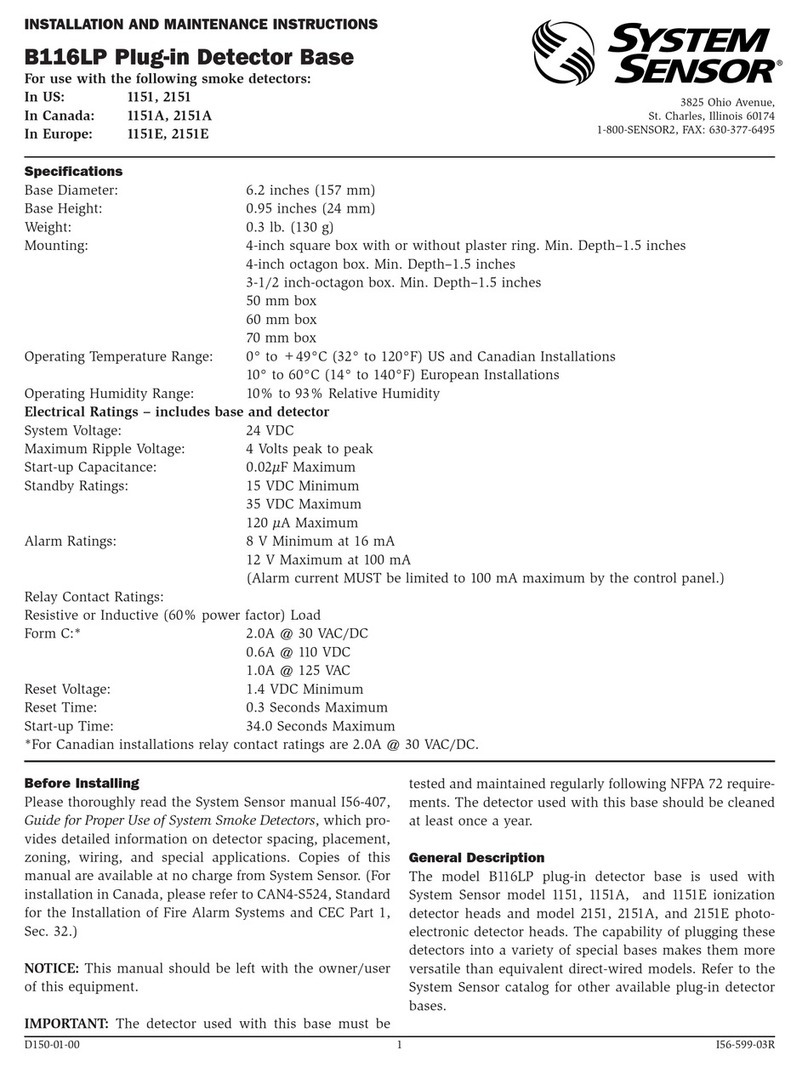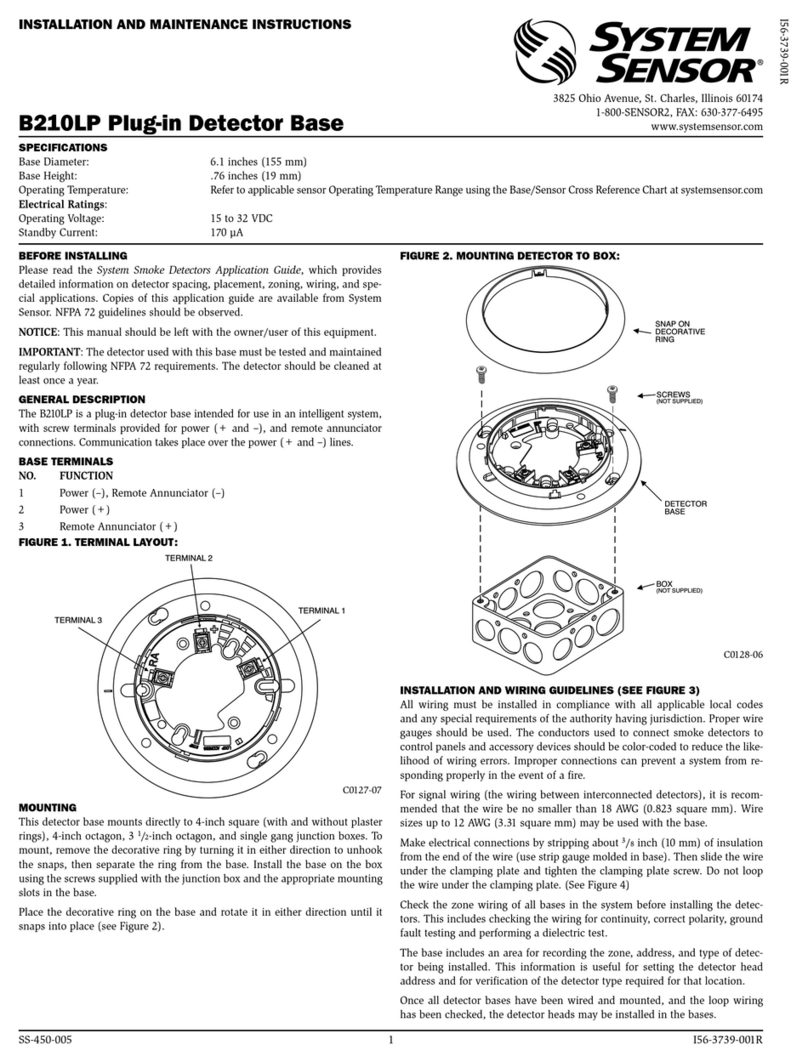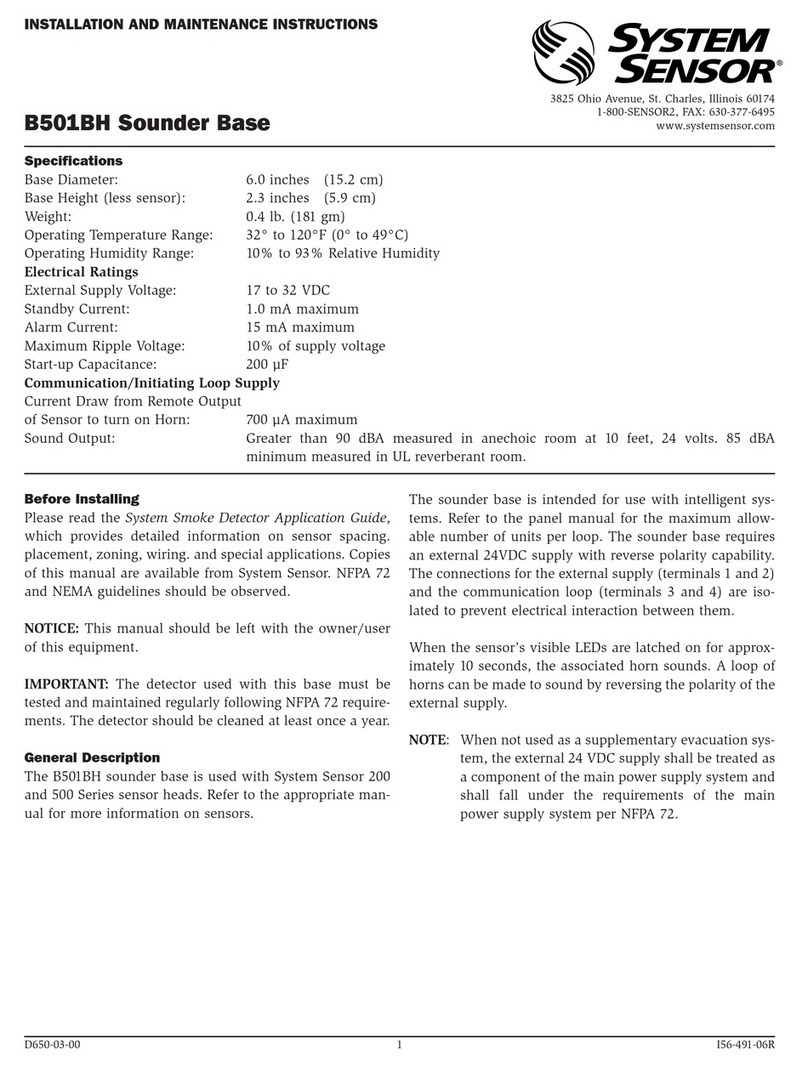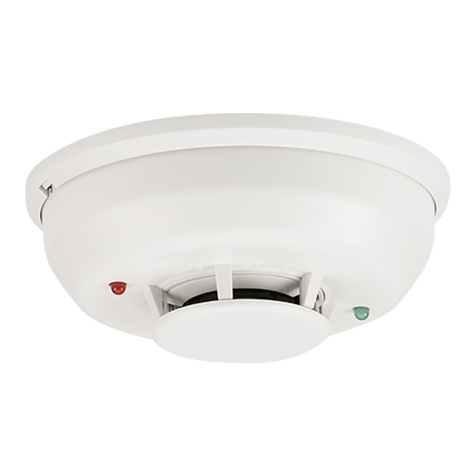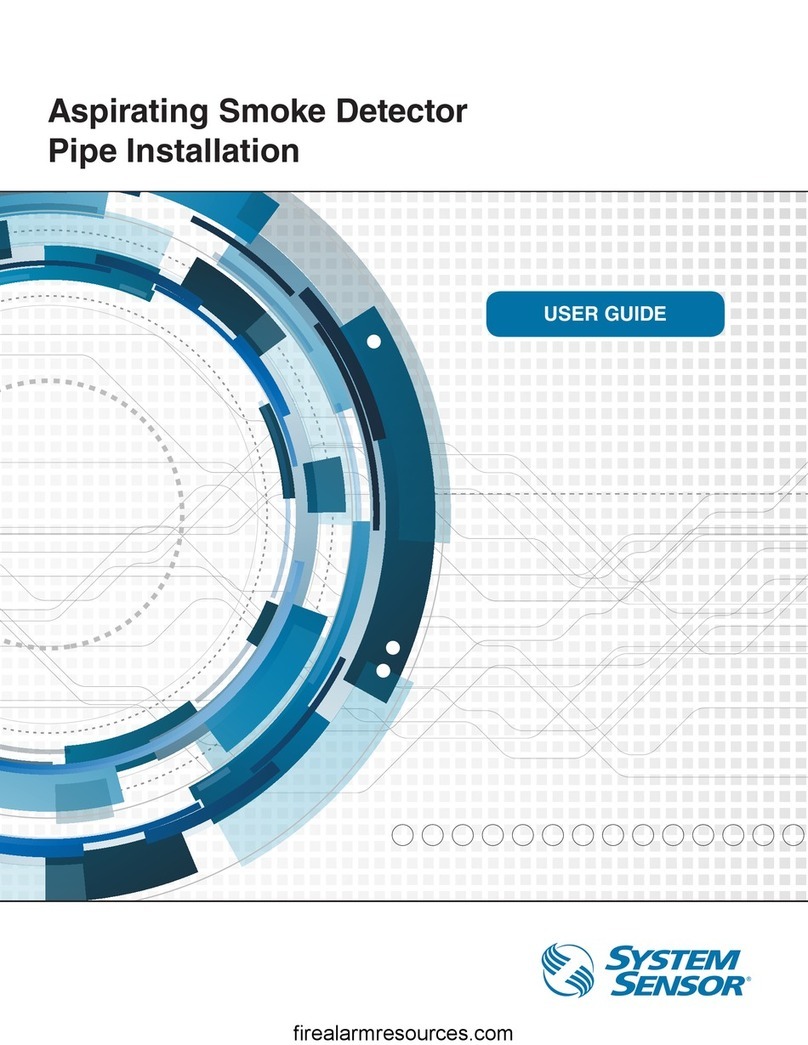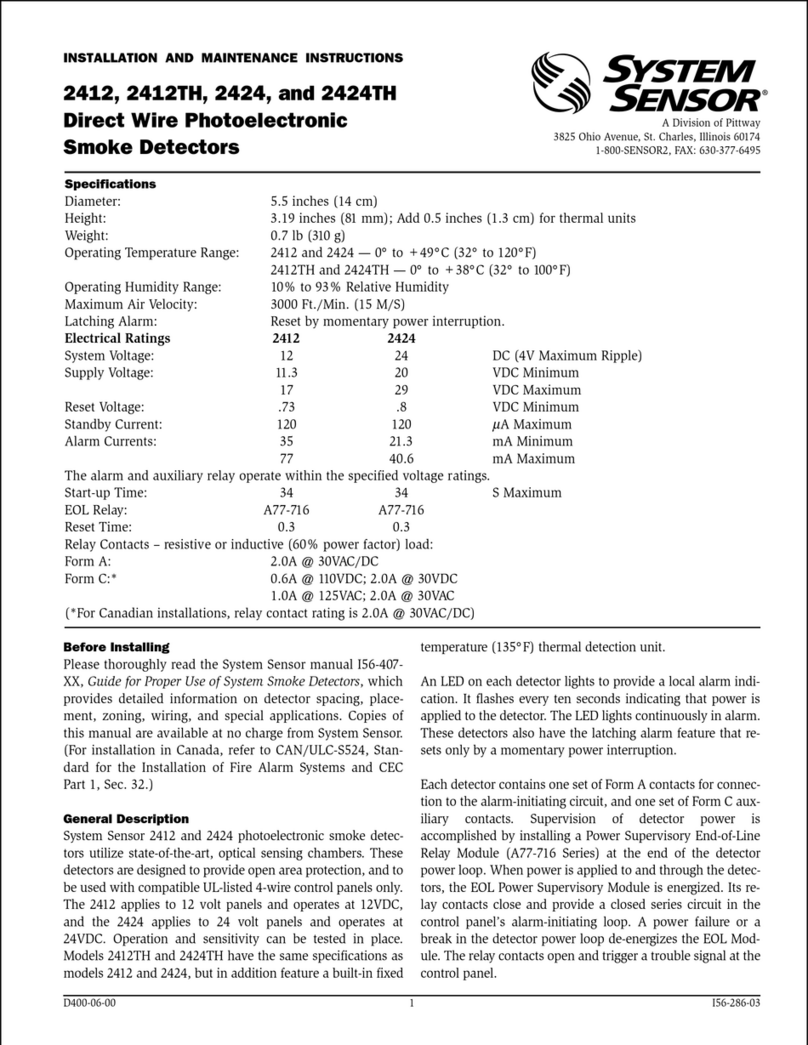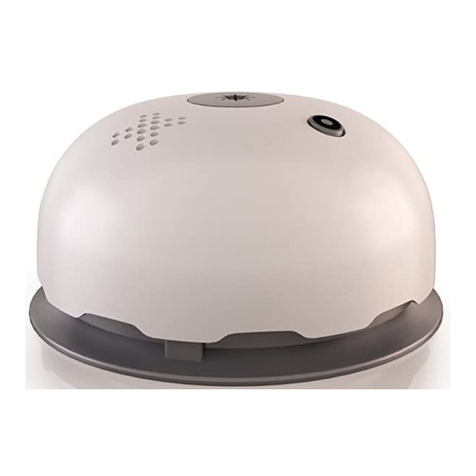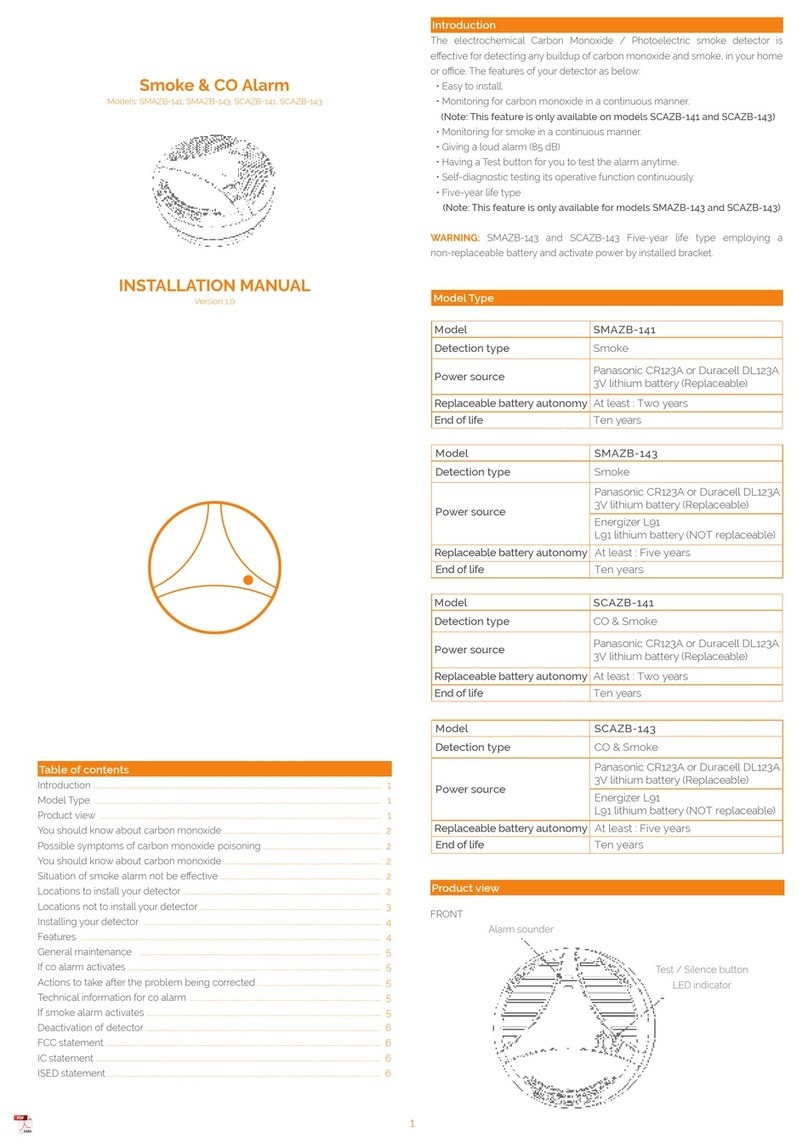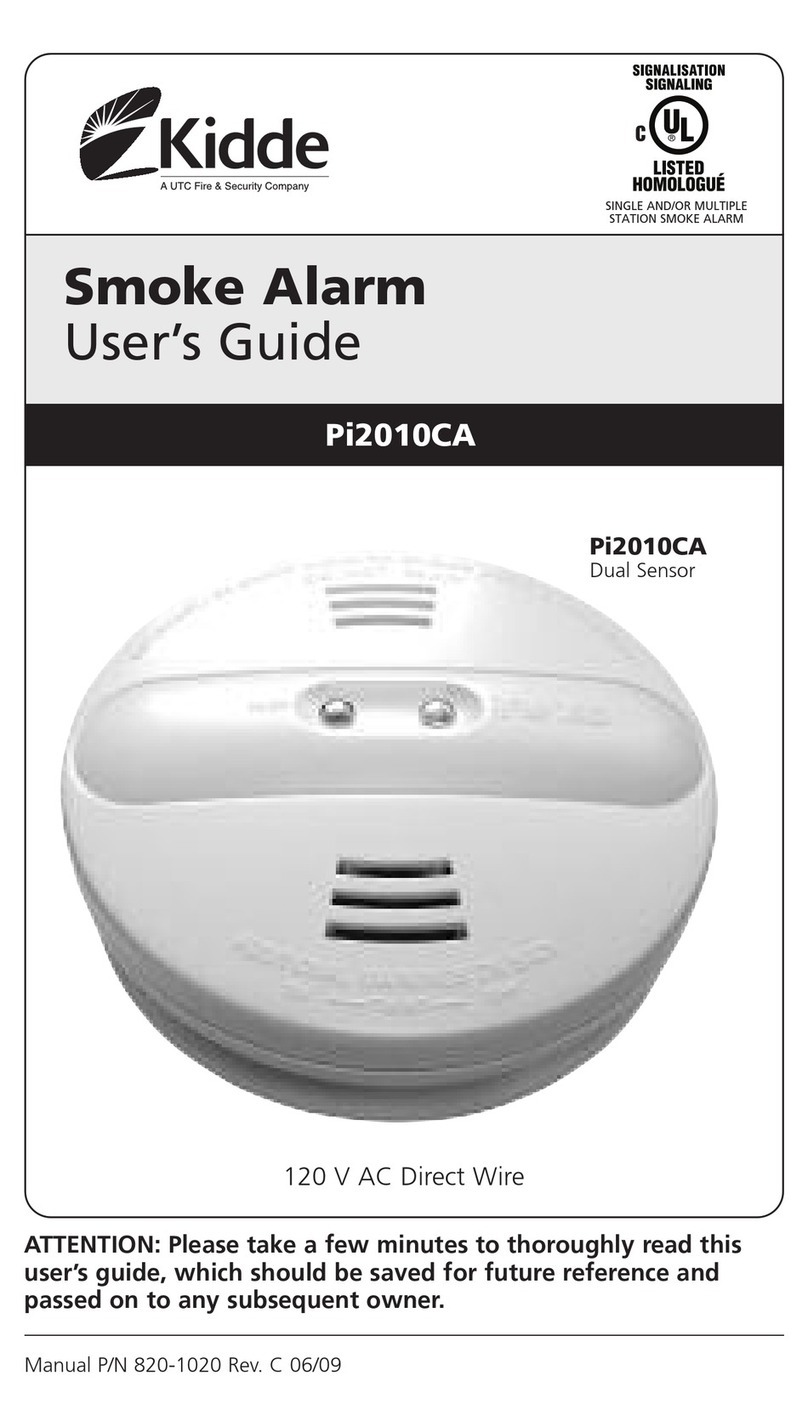
D100-04-00 1 I56-0581-009R
2151 Low Profile
Photoelectronic Plug-in
Smoke Detector
INSTALLATION AND MAINTENANCE INSTRUCTIONS
3825 Ohio Avenue, St. Charles, Illinois 60174
1-800-SENSOR2, FAX: 630-377-6495
www.systemsensor.com
Before Installing
Please thoroughly read the System Sensor manual A05-
1003, Applications Guide for System Smoke Detectors, which
provides detailed information on detector spacing, place-
ment, zoning, wiring, and special applications. Copies of
this manual are available from System Sensor.
NOTICE: This manual should be left with the owner/user
of this equipment.
NOTICE: Model 2151 is a direct replacement for Honeywell
model TC804D1009
IMPORTANT: The detector used with this base must be
tested and maintained regularly following NFPA 72 require-
ments. The detector used with this base should be cleaned
at least once a year.
General Description
The 2151 low-profile photoelectronic detector uses a state-
of-the-art optical sensing chamber. This detector is de-
signed to provide open area protection and to be used with
compatible UL listed control panels only. The capability of
plugging this detector into a variety of special bases makes
it more versatile than equivalent direct-wired models.
Two LEDs on each detector provide local 360° visible alarm
indication. They flash every ten seconds indicating that
power is applied and the detector is working properly. The
LEDs latch on in alarm. Remote LED annunciator capability
is standard and may be implemented through an optional
accessory RA400Z. The alarm can be reset only by a mo-
mentary power interruption. This detector may be tested
by activating the internal reed switch with a magnet.
Base Selection And Wiring Guide
Refer to the installation instructions for the Plug-in Detec-
tor Bases for base selection and wiring instructions. Sys-
tem Sensor has a variety of detector bases available for
this smoke detector, including 2-wire applications with and
without relays and/or current limiting resistors, 4-wire and
120VAC applications.
Specifications
Size
Height: 1.7 inches (43 mm)
Diameter: 4.0 inches (101 mm)
Weight: 3.6 oz. (102 g)
Operating Temperature Range: 0°C to 49°C (32°F to 120°F)
Operating Humidity Range: 10% to 93% Relative Humidity non-condensing
Latching Alarm: Reset by momentary power interruption.
All bases are provided with screw terminals for power,
ground, remote annunciator connections and relay contact
connections, if applicable. The electrical ratings for each
detector-base combination are also included in the base in-
stallation instructions.
Installation
NOTE: All wiring must conform to applicable local codes,
ordinances, and regulations.
NOTE: Verify that all detector bases are installed, that the
initiating-device circuits have been tested, and that the wir-
ing is correct. (Refer to detector base manual for testing
procedure.)
Remove power from initiating-device circuits before install-
ing detectors.
1. Install detectors:
a. Place the detector into the detector base.
b. Turn the detector clockwise until the detector drops
into place.
c. Continue turning detector clockwise to lock it
in place.
2. Tamper Resistance: The detector bases can be made
tamper resistant. When capability is enabled, detectors
cannot be removed from the base without the use of a
tool. See the detector base installation manual of the
detector base for details in using this capability.
3. After all detectors have been installed, apply power to
the control unit.
4. Test the detector using the magnet as described
under TESTING.
5. Reset the detector at the system control panel.
6. Notify the proper authorities that the system is back
on line.
